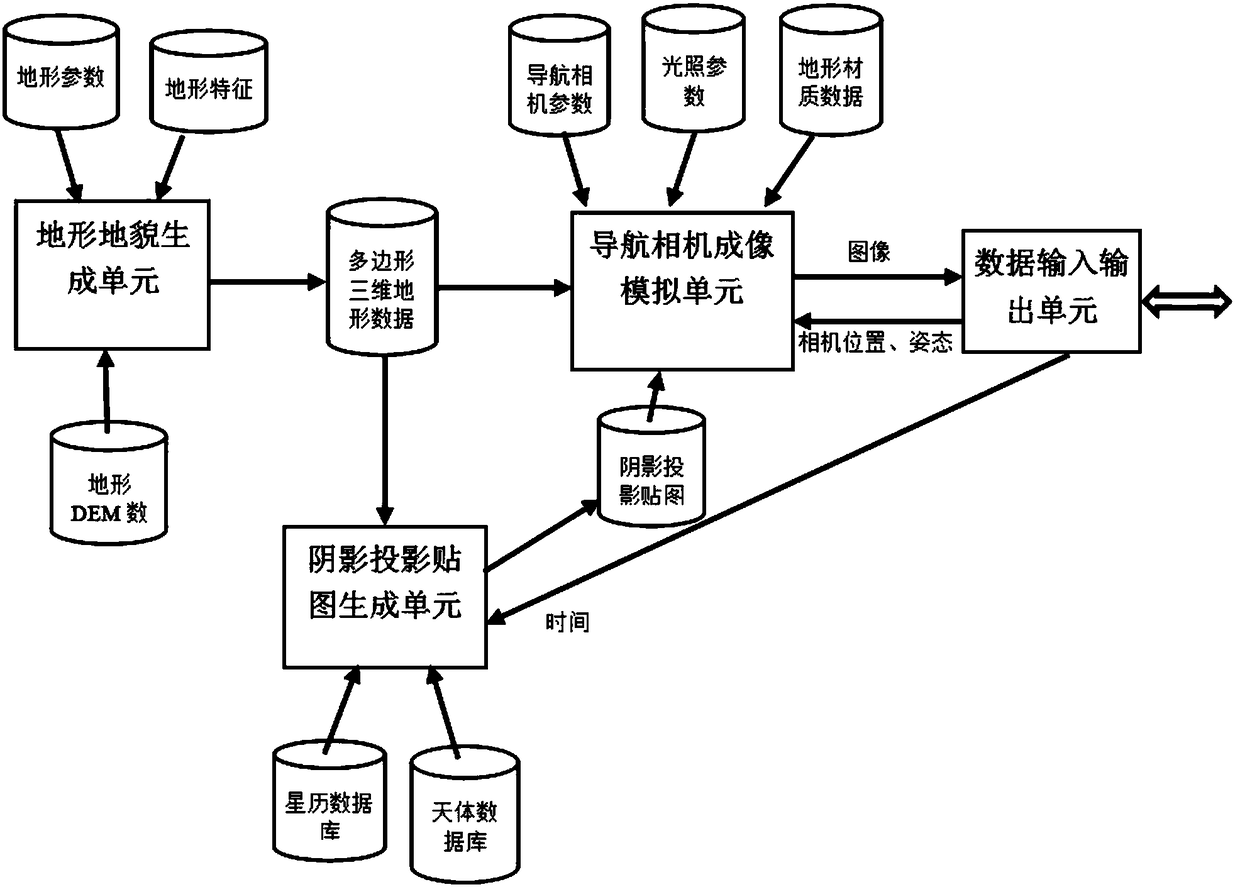A deep space probe landing autonomous optical navigation target imaging simulation system
A deep space probe and optical navigation technology, applied in the field of deep space probe landing autonomous optical navigation target imaging simulation system, can solve the problems of high cost, complex system, poor flexibility, etc.
- Summary
- Abstract
- Description
- Claims
- Application Information
AI Technical Summary
Problems solved by technology
Method used
Image
Examples
Embodiment Construction
[0022] Combine below figure 1 The present invention will be further described with specific embodiments.
[0023] The target celestial body terrain and landform generation unit, including its corresponding terrain DEM database and two configuration files.
[0024] The target celestial body topography generation unit is a separate program. Before using this system for simulation, researchers must first use the target celestial body topography generation unit to pre-generate terrain data that meets the required accuracy to generate the target landing celestial body.
[0025] Terrain DEM (Digital Elevation Model) database contains rough DEM data of some celestial bodies that humans have explored currently, including the DEM data of the moon, Mars, 433Eros, and 25143Itokawa. When the database does not contain the target celestial body that researchers want to simulate landing When collecting data, researchers can manually import the topographic DEM data of the target celestial bo...
PUM
 Login to View More
Login to View More Abstract
Description
Claims
Application Information
 Login to View More
Login to View More - R&D
- Intellectual Property
- Life Sciences
- Materials
- Tech Scout
- Unparalleled Data Quality
- Higher Quality Content
- 60% Fewer Hallucinations
Browse by: Latest US Patents, China's latest patents, Technical Efficacy Thesaurus, Application Domain, Technology Topic, Popular Technical Reports.
© 2025 PatSnap. All rights reserved.Legal|Privacy policy|Modern Slavery Act Transparency Statement|Sitemap|About US| Contact US: help@patsnap.com

